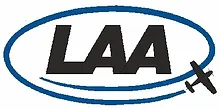On the Sheet Metal course we were told about wet joints using a anti-corrosion paste/paint. Two types were mentioned possibly Duralac and another.
Can anyone supply the full names and the pro/cons of each type?
And does 6061 ali need the same treatment as 20xx ali?
Wet riveted joints
Duralac Anti-Corrosive Jointing Compound and JC5A Jointing Compound may be the ones you are thinking of and I have seen advertised at LAS.
They look pretty similar to me although I've read that JC5A is better and therefore slightly more expensive because it "will not harden with time, thus ensuring better corrosion prevention and easier dismantling of joints"
Duralac goes sticky, then hardens, it doesn't bond the joint but it is more difficult to remove than JC5A.
I have also seen sealant used for wet assembly before, this will bond the joint and will take some extra effort to scrape off when dismantled. I have not got to this stage yet, but I intend to coat every mating surface with duralac (including rivets) before assembly.
They look pretty similar to me although I've read that JC5A is better and therefore slightly more expensive because it "will not harden with time, thus ensuring better corrosion prevention and easier dismantling of joints"
Duralac goes sticky, then hardens, it doesn't bond the joint but it is more difficult to remove than JC5A.
I have also seen sealant used for wet assembly before, this will bond the joint and will take some extra effort to scrape off when dismantled. I have not got to this stage yet, but I intend to coat every mating surface with duralac (including rivets) before assembly.
036540
Actually, JC5A is about 5x the price but a far superior product. If you are going to use it on every joint, the cost will be significant. It is also messy and can affect the quality of the riveting if overdone. The latest batch I bought used barium chromate rather than zinc chromate for reasons, I assume, of reduced toxicity.
Anyway, my inspector recommended use only in corrosion critical areas such as external joints (skin to rear spar, end ribs to skin, skin laps etc). I also use it on any dissimilar metal joints (control hinge brackets, nut-plates etc).
Anyway, my inspector recommended use only in corrosion critical areas such as external joints (skin to rear spar, end ribs to skin, skin laps etc). I also use it on any dissimilar metal joints (control hinge brackets, nut-plates etc).
Paul Marskell
RV-10 ZU-IIZ
At Mercy Air, White River, RSA
Bearhawk Bravo QB under construction
RV-10 ZU-IIZ
At Mercy Air, White River, RSA
Bearhawk Bravo QB under construction
-
Ian Melville
- Posts: 1001
- Joined: Mon Feb 11, 2008 7:21 pm
The thing that was noted about JC5A on the course was that it can be a problem on outer skins as because it never goes hard it will seep/squeeze out of the joint over time and can then cause problems with the paint adhesion / finish.
I'd recommend the metalwork course. Highly informative and great fun to boot. Just need to decide which RV to build now...
I'd recommend the metalwork course. Highly informative and great fun to boot. Just need to decide which RV to build now...
Rob Swain
If the good Lord had intended man to fly, He would have given him more money.
If the good Lord had intended man to fly, He would have given him more money.
There have been cases on certified aircraft where the JC5a has acted as a moisture trap and actually caused corrosion. I've not found any clear guidance in that respect.
The other type of wet rivetting is with a 2-part polysulphide like DeSoto PR-1422B2. This is used on fuel tanks and other areas where a galvanic barrier or seal is required (like stainless firewall onto an ali fuselage. It helps keep the joint oil tight, cures to a tough stretchy rubber that is also paintable. This is also often used when rivetting pressurized airframes.
I'd echo the point about not using JC5a where you're going to paint.
The other type of wet rivetting is with a 2-part polysulphide like DeSoto PR-1422B2. This is used on fuel tanks and other areas where a galvanic barrier or seal is required (like stainless firewall onto an ali fuselage. It helps keep the joint oil tight, cures to a tough stretchy rubber that is also paintable. This is also often used when rivetting pressurized airframes.
I'd echo the point about not using JC5a where you're going to paint.
Mark Albery
014377
014377
